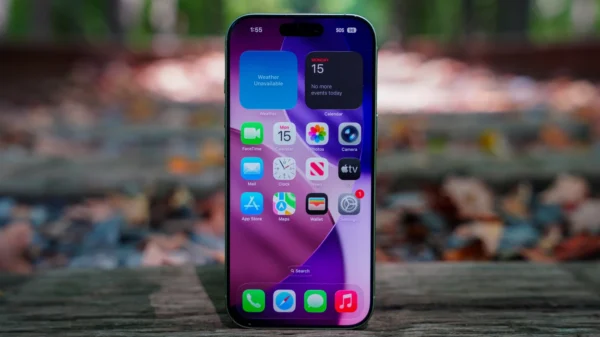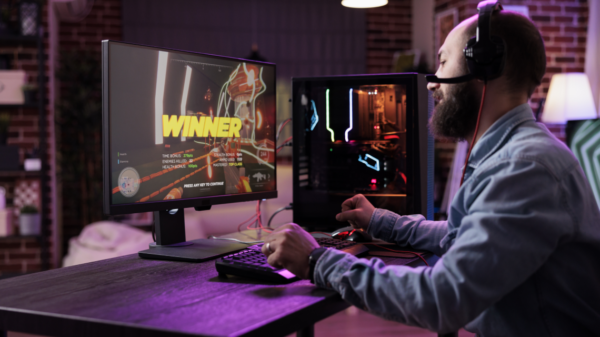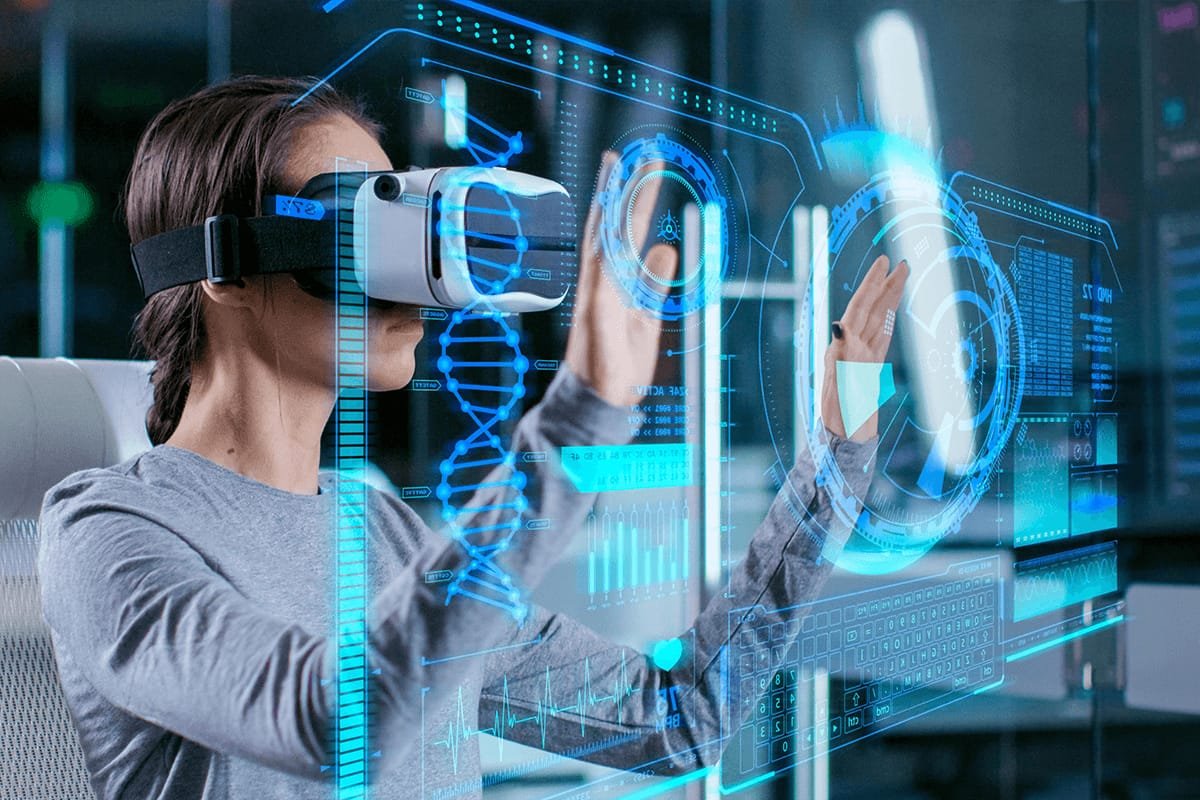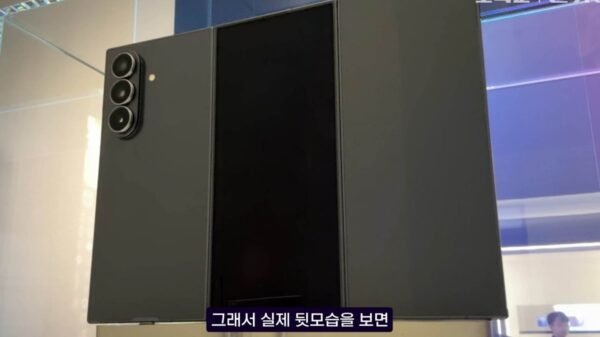Overview
Virtual reality (VR) and augmented reality (AR) have become key technologies that are revolutionizing customer interactions and business processes. Whereas AR superimposes digital data on the physical world, VR transports people to virtual worlds. These days, these technologies are not just found in games and entertainment; they are also used in a wide range of industries, including retail, healthcare, and education. Their increasing significance in contemporary corporate strategies is highlighted by their capacity to promote consumer engagement, streamline operational workflows, and improve training simulations.
Present-day Uses of VR and AR in Business
Instruction and Modeling
VR has completely changed training procedures in sectors like aerospace and healthcare where accuracy and safety are critical. While surgeons perform delicate procedures in risk-free virtual settings, pilots can mimic difficult flight circumstances. In a similar vein, AR helps technicians by superimposing real-time diagnostic data onto equipment, which speeds up repairs and minimizes downtime. These apps reduce expenses related to conventional training techniques while simultaneously improving skill learning.
Promotion and Client Involvement
VR and AR are revolutionizing consumer-business engagement. Customers can experience products in realistic settings before making a purchase thanks to virtual showrooms and immersive product presentations made possible by virtual reality. Contrarily, augmented reality (AR) improves advertising by superimposing interactive components on print or digital media. Companies may design captivating marketing campaigns that allow customers to use their cellphones to interact with items in real time, building stronger relationships and influencing consumer behavior.
Benefits of Virtual Reality in Business
Virtual reality has taken the gaming and entertainment world by storm. However, more businesses are harnessing the benefits of virtual reality and augmented reality to collaborate and conduct business. With massive advancements in VR technology, businesses are now in a strategic position to not only leverage virtual reality in their routine activities, but also harness immersive experiences and technology to grow in new ways.
Save time and money by reducing travel
A clear benefit of VR applications in business is to enable activities that would otherwise require physical presence. Traditionally, people must be face-to-face to experience a given work environment, site, facility, etc. However, with the ability to generate fully immersive captures, up to and including real-time 360° videoconferencing, VR can deliver concrete and measurable ROI. There are several use-cases where VR can deliver savings.
Remote inspections and audits
In many industries, senior managers are responsible for far-flung facilities across wide geographies. Physical distance makes it difficult for managers to access these locations frequently, and standard videoconferencing is a poor substitute for presence. VR capture platforms like Avatour make it possible to conduct much more effective remote inspections for continuous improvement, progress reviews, supplier audits, Gemba walks, and similar applications.
Virtual tours and site surveys
Business development leaders in contract manufacturing, contract logistics, and other industries know that tours close deals. When you have a state-of-the-art facility, you need to show it off — but it can be difficult to get prospects to take the trip. Virtual tours, using either VR or a simple web interface, are an important and valuable tool for marketing and sales applications. Businesses can virtually bring customers on-site without the expense of travel, and close deals quicker.
Improve safety and efficiency with more effective training
According to a 2020 report, VR training can reduce the occurrence of workplace injuries by 43%. Such a drastic reduction in risk can not only help companies save money, but can also avoid any damaging PR issues or employee dissatisfaction with workplace safety. There are two high-level approaches to creating VR training content.
For extremely high-value applications, training professionals develop fully synthetic, interactive 3D environments, similar to a video game, where learners can interact with machinery or situations and learn specific operations. These simulations typically require custom programming using a game engine like Unity or Unreal, and while they are extremely effective for mission-critical applications like surgery or combat, they can be very costly to develop and maintain.
Boost collaboration and productivity across projects and locations
With the ability to bring people into a virtual environment, teams can feel inherently more collaborative and productive. Instead of taking the time to travel to sort out an issue, teams can meet more frequently across a project or product development lifecycle to address any issues.
Enhance customer service and increase sales
Companies are now leveraging virtual reality to gain a competitive advantage and boost brand awareness within their industry. Virtual tours and experiences boost the prospect or customer experience. Now, customers can gain a realistic understanding of a place without having to travel. Virtual reality also increases trust amongst customers and stakeholders, as attendees can read body language and capabilities of on-site members as if they were physically present.
With business entering the Metaverse, there is no doubt that VR technology will transform both large and small businesses. The benefits of VR are endless. Such immersive remote collaboration puts business in the driver’s seat of creating new and collaborative experiences.
How Virtual Reality Is Impacting Modern Businesses
Many major technology companies, such as Google and HTC, have invested heavily in VR and AR in order to better leverage these immersive technologies. As a result, they are now being used to revolutionize operations within businesses across many different industries.
Product Development
One of the most impactful uses of VR in business is in product development. When a company creates a new product, they typically build a prototype, which is then used as a base for mass manufacturing. While creating prototypes is useful, it is not efficient, as any desired changes require a new prototype to be created. VR presents an opportunity for businesses to drastically cut costs and other resources associated with the entire product prototyping process. Feedback and experimentation from engineers, decision-makers, and product testing groups can be implemented virtually, without the need for repeated physical prototyping early in the design process. This efficiency during the development stage of products allows businesses to get products to market much faster while avoiding potential post-production errors or recalls.
Marketing and Online Shopping
Businesses are using VR to drastically change the way they market to consumers and how goods and services are sold. Car manufacturers are offering virtual test drives. BMW and Samsung have teamed up to develop a virtual reality tool that gives potential buyers a virtual presentation using the Oculus Rift headset. This headset gives a complete 360-degree view of the vehicle, including stereo sound. IKEA, Amazon, and other retailers are leveraging virtual and augmented reality technology by offering virtual experiences to consumers without the overhead and resources needed for traditional brick and mortar locations. Nike has developed an app that uses augmented reality and geofencing to give consumers the virtual interactive experience of trying on shoes without visiting the store.l
Virtual Touring
Real estate companies are beginning to unlock the potential of VR. Companies like Matterport create virtual tours for potential customers by creating guided visits to locations. Guided and interactive visits give real estate companies opportunities to provide customers with an interactive experience that was previously impossible without an in-person visit. Real estate agents can offer remote guided tours to potential buyers. An interactive visit is more convenient for shoppers, allowing them to move freely throughout properties using clickable areas to navigate.
Computing
Microsoft is again at the forefront of technology, just as they were during the personal computer revolution over 50 years ago. Hololens uses the latest in augmented reality by creating a virtual world that comprises sensor interaction, advanced optic technology, and holographic processing, blending these tools with the real world. Within this virtual world, all Microsoft’s business apps and virtually all software tools used on a personal computer are available through Hololens. Microsoft’s Hololens may be the future of the personal computer.
Healthcare
Telemedicine, patient-centric medical home (PCMH), and remote patient monitoring are examples of how the healthcare industry is using virtual and augmented reality to improve the quality of care for patients.
Embodied Labs is one of the leading health information technology companies trailblazing the path of VR in healthcare. Embodied is using augmented and virtual reality to help medical students and healthcare professionals acquire the skills they need to provide quality care. Their system allows users to experience healthcare issues from a first person perspective by simulating the patient’s experience.
Companies like VR Health specialize in creating VR applications to generate a higher quality of care for rehab patients. VR Health has created a suite of games and exercises that allow an accurate measure of the rehab patient’s progress.
Training
Companies in a variety of industries are utilizing VR technology for training. These methods improve employee retention and engagement, provide a safer environment, and make employees more knowledgeable. Corporate businesses use VR to train employees to develop soft skills, such as presentation practice in front of virtual audiences. VirtualSpeech offers a set of VR-based training solutions that cover valuable skill sets vital to a business’s success. The VirtualSpeech training suite includes soft skills such as sales, networking, public speaking, and negotiation.
Encouraging Adoption Progress in Business
Innovations in Hardware
Consumer markets are adopting VR and AR technologies more quickly as a result of their evolving hardware. Recent developments in ergonomics and display technology have made these technologies more widely available, transforming heavy headsets into lightweight, comfortable gadgets. Furthermore, the deployment of 5G networks and developments in edge computing are decreasing latency, which improves the responsiveness and real-time interaction of VR and AR apps. This is important for industries like virtual events and distant collaboration.
Software Improvements
The development of blockchain and AI software is essential to improving VR and AR experiences. In augmented reality apps, AI algorithms customize user interactions by modifying content according to the tastes and actions of the user. Blockchain technology protects user data and intellectual property by enabling safe transactions and content sharing in virtual reality environments. In addition to raising user satisfaction, these technological synergies are increasing the range of industries in which VR and AR may be used.
Sectors Ready for Change
Telemedicine and Health Care
Virtual reality simulations in healthcare are transforming medical education and training. Practicing complex procedures in lifelike virtual environments helps surgeons become more proficient and improves patient outcomes. By superimposing patient data and diagnostic information over the doctor’s field of vision during remote consultations, augmented reality (AR) improves telemedicine and allows for better informed decision-making and individualized patient care.
Property and Design
Virtual reality (VR) is revolutionizing the real estate industry by providing prospective buyers with immersive experiences and virtual home tours. With the ability to view properties from anywhere in the globe, prospective homebuyers can make decisions faster and with fewer in-person trips. Using augmented reality (AR), architects may see intricate designs in real-world settings, facilitate collaborative design reviews, and improve project accuracy from start to finish.
Possibilities and Difficulties
Concerns about Ethics and Privacy
Privacy and data security concerns have emerged as a result of the massive amounts of user data that VR and AR are collecting. Building user trust and adhering to changing regulatory frameworks depend heavily on protecting personal data and upholding transparency in data usage policies. In addition, the ethical ramifications of augmented reality and hyper-realistic simulations raise concerns about society standards and their possible effects on human perception and behavior.
Prospective Patterns and Forecasts
The market for VR and AR is expected to develop exponentially in the future. Analysts predict significant market size growth, driven by rising applications across industries and technological developments. There is potential for developing new business models and immersive experiences that cross conventional borders with the incorporation of VR and AR into the metaverse, a digital cosmos where virtual and physical realities collide.
In summary
In conclusion, VR and AR technologies have a significant and wide-ranging business influence. These technologies are changing how businesses function and engage with their stakeholders. They are driving improvements in healthcare and architecture, reinventing training and customer engagement. Adopting VR and AR revolutionary potential gives organizations unmatched development and innovation prospects as they negotiate the constraints of privacy and ethical issues. Businesses may take the lead in the digital revolution by keeping up with technology changes and effectively utilizing these tools.
FAQs
Q1: What sectors gain the most from virtual reality and augmented reality technologies?
A1: Technologies like VR and AR are having a big impact on a lot of different businesses. VR simulations and AR-assisted surgeries are beneficial for healthcare, while VR is used by retail to create virtual shopping environments. Virtual tours and interactive learning environments have a transformational effect on industries such as real estate and education.
Q2: How are privacy issues handled in applications for VR and AR?
A2: Strict data security measures and openness in data management procedures solve privacy issues in VR and AR. Businesses respect legal frameworks and deploy encryption technology to safeguard user data obtained from VR and AR interactions.
Q3: How does AI improve the VR and AR experiences?
A3: By tailoring content distribution, enhancing interaction dynamics, and optimizing performance depending on user behavior and preferences, AI improves VR and AR experiences. For instance, AI algorithms in augmented reality apps can dynamically modify virtual overlays to correspond with human input.
Q4: What developments are we likely to see in VR and AR technology?
A4: Upcoming trends include software improvements that combine blockchain technology, artificial intelligence, and virtual reality (VR and AR) with hardware advancements like lighter and more immersive headsets. It is also anticipated that the emergence of the metaverse would change corporate settings and digital interactions.
Key Takeaway
- Businesses in a variety of industries would benefit greatly from the combination of augmented reality (AR) and virtual reality (VR).
- VR and AR are changing the face of business, from pushing innovation in healthcare and architecture to improving training efficiencies and changing consumer experiences.
- Businesses looking to fully utilize VR and AR must handle privacy concerns and remain ahead of changing market trends in addition to strategically embracing these technologies, which can open up new growth and competitive advantage opportunities.
With a focus on their revolutionary potential and a thorough analysis of the important factors to take into account for stakeholders and businesses, this framework offers a thorough overview of the business implications of VR and AR technologies. Please let me know if you would like any additions or changes made!
















































